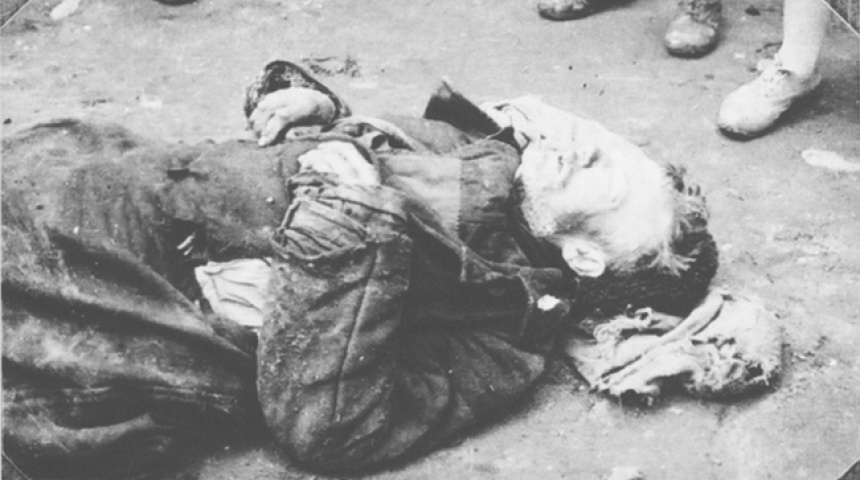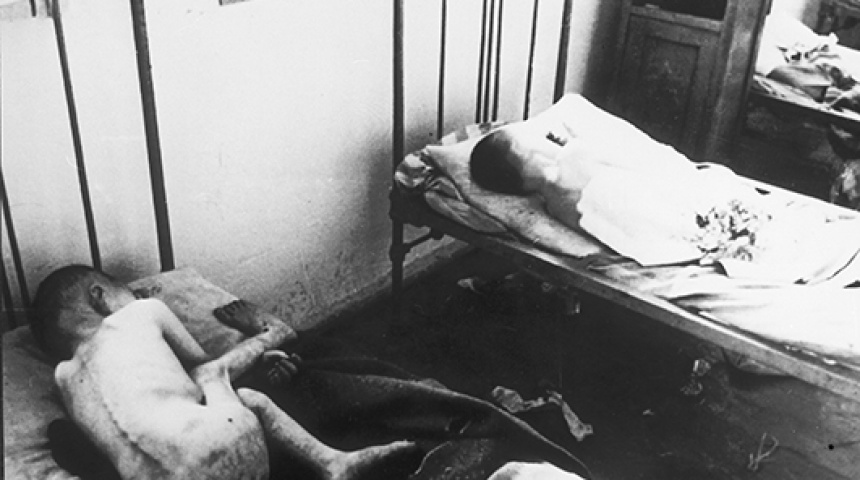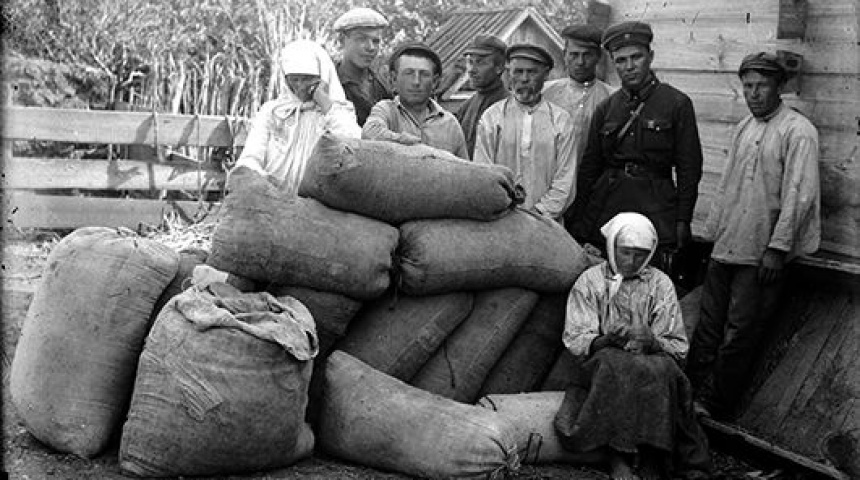Holodomor History
Holodomor is а genocide of the Ukrainian nation committed in 1932–1933. The leadership of the Soviet Union committed it in order to suppress Ukrainians and ultimately eliminate Ukrainian resistance to the regime, including efforts to build an independent Ukrainian state. In 2006, by the Law of Ukraine “On the Holodomor of 1932-1933 in Ukraine”, the Holodomor was recognised as genocide of the Ukrainian nation. In 2010, the resolution of the Court of Appeal in Kyiv region proved the genocidal nature of the Holodomor and the intention of Stalin, Molotov, Kaganovich, Postyshev, Chubar, Khatayevych, and Kosior to destroy a part of the Ukrainian nation. While committing the particularly grave crime of genocide in 1932–1933, the communist totalitarian regime destroyed millions.
After dividing the territory of Ukraine between the Polish-Lithuanian Commonwealth and the Moscow Kingdom in the middle of the 17th century, the Ukrainian nation did not have its statehood for the next two centuries. That is why it faced oppression on political, economic, national, and cultural frontlines. Russia carried out a harsh colonisation of Left-Bank Ukraine. Powerful Russification, chauvinism, and the policy of identifying Ukrainians with the Russian people (identification of Ukraine as part of Russia — Little Russia) did not destroy the Ukrainian national consciousness. Ukrainians very keenly felt their difference from the Russians and, for centuries, waged a permanent liberation struggle. It was only in 1918 that they succeeded in establishing the Ukrainian State—the Ukrainian People’s Republic—and in uniting Ukrainian territories.
At the beginning of the 20th century, the independent Ukrainian State lasted only a few years, struggling with constant encroachments and interference in the country’s internal affairs from outside. It never managed to constructively lay and strengthen the foundation of its independence in the world. After the third occupation of the Ukrainian lands that were part of the Russian Empire, the Russian Bolsheviks established a communist totalitarian regime by force and puppet governments.
On July 6, 1922, the Union of Soviet Socialist Republics was established, which included the Ukrainian Soviet Socialist Republic. Union treaty called for full equality of republics, but the Kremlin actually controlled Ukraine.
Despite the short periods of state formation, the Ukrainian state tradition still existed and had deep historical roots, dating back to the period of Kyivan Rus. It united the nation, strengthened Ukrainian nationalism and contradicted Lenin’s theory of socialism, which envisaged the fusion of nations. Having occupied the territory of Ukraine, the Russian Bolsheviks felt this very acutely. Lenin defined the national movement and the problems of national sovereignty as a phenomenon of a bourgeois nature, with which the Bolsheviks fought. The Ukrainian essence was an obstacle to the existence of the USSR in the format determined by the Soviet leadership.
With the establishment of the communist regime, noticeable changes occurred in the social, socio-political and socio-economic life of Ukraine, which primarily affected the traditional village. The communist totalitarian regime imposed new customs and new rituals on Ukrainians while at the same time forcing them to renounce the past and forget their origins. Ukrainisation was curtailed. An attack on the spiritual life of Ukrainians began.

In 1928, the Soviet leadership announced a collectivisation policy, the unification of individual private peasant farms into state-owned collective farms. Each farmer was assigned a certain number of trudodni (workdays), for which they were paid in kind. However, mainly, the totality of workdays was so miserable that denied any opportunity for the farmers to feed themselves and their families. Considering Ukrainian farmers’ strong sense of individualism, the implementation of the collective farm policy system in Ukraine faced resistance. Therefore, farmers were forcefully herded into collective farms by compulsion, terror and propaganda war with dissenters, whom the regime marked as “kulaks,” “bourgeois nationalists,” and “counter-revolutionaries,” and destroyed those people.
The policy of the Soviet regime provoked the Ukrainian people’s resistance. Historians have recorded about 4 thousand farmers’ mass demonstrations in the early 1930s against collectivisation, tax policy, robbery, terror and violence done by authorities.
The sense of national identity of the Ukrainian farmers, together with their mental individualism, contradicted the ideology of the Soviet Union. It was the basis of Ukrainian nationalism and posed a threat to the unity and very existence of the USSR. That is why the object of the genocide crime was the Ukrainian nation. Consequently, the Stalinist totalitarian regime exterminated the Ukrainian peasantry by genocide as a specific part of the nation and the source of its spiritual and material strength to weaken it.
The Kremlin was well aware of the danger of riots and rebellions for the existence of the USSR. Having no desire to lose Ukraine, the Soviet regime created a plan to destroy the Ukrainian nation, disguised as grain procurement plans for the state. It was about the complete seizure of all grain stocks and other food and property confiscation as penalties for failure of the grain procurement plan. After turning Ukraine into a famine territory, the regime cut off all the ways to salvation. Only Ukrainian and Kuban farmers were forbidden to travel to cities in Russia and Belarus. They physically locked 22,4 million people within the territory of the Holodomor.
Stalin, who considered farmers the basis of the national movement, hit the Ukrainian farmers as the bearers of Ukrainian traditions, culture and language. In 1932, they established an unrealistic implementation grain procurement plan of 356 million poods of grain for Ukraine. To approve the plan, Stalin’s closest associates, Kaganovich and Molotov, who were well informed about the scale of the famine in the first half of 1932, came to Kharkiv, Ukraine. The Genocide was organised and committed by the legalisation of violence and mass murder of Ukrainians by government representatives. About 400 archival documents confirm this.
In the early 1930s, the policy of collectivisation in Ukraine collapsed. Farmers massively abandoned farms and took their property back: livestock, stock, and earned grain. On August 7, 1932, to preserve farms and property in state hands, the regime adopted a repressive resolution known among the people as a “Law On Five Ears of Grain.”
The resolution of the Central Executive Committee and the Council of People’s Commissars of the USSR, “On Safekeeping Property of State Enterprises, Collective Farms and Cooperatives and Strengthening Public (Socialist) Property,” equated all collective farm property with state property, and severe punishment was established for its theft. According to this law, the state punished starving farmers for collecting crop leftovers in the field with ten years of imprisonment with confiscation of property or execution. They organised special groups of people who searched the population to seize grain by force. Such searches were accompanied by terror and physical and moral abuse of people.

The next genocidal decision was the establishment of fines in kind — the right of the state to take from the farmers not only grain but also other food products and property that could be sold or exchanged for food. Such a phenomenon did not exist in any other republic of the USSR. In order to increase the famine in Ukraine, the Politburo of the Central Committee of the CPSU (b), under pressure by Molotov, on November 18, 1932, adopted a resolution that introduced a specific repressive regime — “black boards”. Listing on the “black boards” meant a physical food blockade of collective farms, villages, and districts: total food seizure, a ban on trade and the delivery of goods, a ban on the departure of farmers, and the surrounding of the settlement by military detachments, the GPU, and the police. In 1932–1933, the “black boards” regime operated in 180 districts of the Ukrainian SSR (25% of districts). They applied such a repressive regime only in Ukraine and the Kuban, that is, in places where Ukrainians lived in dense populations.
The Kremlin created conditions of life designed to destroy the Ukrainian nation through the complete seizure of all food supplies. The resolution of the Central Committee of the All-Union Communist Party (Bolsheviks) and the Soviet People’s Commissariat of the USSR of January 22, 1933, signed by Stalin and Molotov, blocked Ukrainians within the starving territory, prohibiting them from leaving the Ukrainian SSR and the Kuban for bread. They did not apply such a decision to any other administrative region or republic of the USSR.
The Stalinist regime declared the famine in Ukraine to be a non-existent phenomenon and, on this basis, refused the assistance offered by numerous non-governmental organisations, including Ukrainian communities abroad and the International Red Cross.
In the spring of 1933, mortality in Ukraine reached catastrophic proportions. The peak of the Holodomor occurred in June. Then 28 thousand people died a martyr’s death every day, 1168 people every hour, 20 people every minute. At this time, Moscow provided Ukraine with seed (for the sowing campaign) and food loans. If food did reach the villages, it was provided mainly as public catering and only to those collective farmers who could still work and live in the field camps.

All this occurred with existing large grain reserves in centralised state reserve funds and large-scale food exports. The actions of the totalitarian regime confirm the intention to destroy part of the Ukrainian nation within a specific time frame.
The communist totalitarian regime exterminated millions of Ukrainians, committing a particularly grave crime of genocide in 1932–1933.
Certain historical circumstances complicate the calculations and, even more so – establish the names of the killed. The communist totalitarian regime did everything possible to conceal the consequences of its crime. It was forbidden to record the actual number of deaths. Today, secret lists of some village councils, with those who died in 1932-1933 listed, were discovered. These lists are twice the official data. It is quite clear that such cases were not isolated. There was a ban on documenting the cause of death as “hunger”, so death certificates indicated “from typhus”, “exhaustion”, or “from old age”. In 1934, all the registry office books about death registration were transferred to a specific department of GPU. Whole families and villages died out, and there were not always records made. The level of unreported deaths is unknown, but it is clear that millions died.
The Soviet Union convinced the international public “not to see” the mass murder of Ukrainians with the help of propaganda and bribery of individual journalists. However, some publicists wrote the truth. Reports of ambassadors and diplomats have survived. The regime took measures to erase the memory of the killing of millions of Ukrainians, but the memory of the people is indestructible. Moreover, with the independence of Ukraine, the ban on talking about the Holodomor was lifted.
